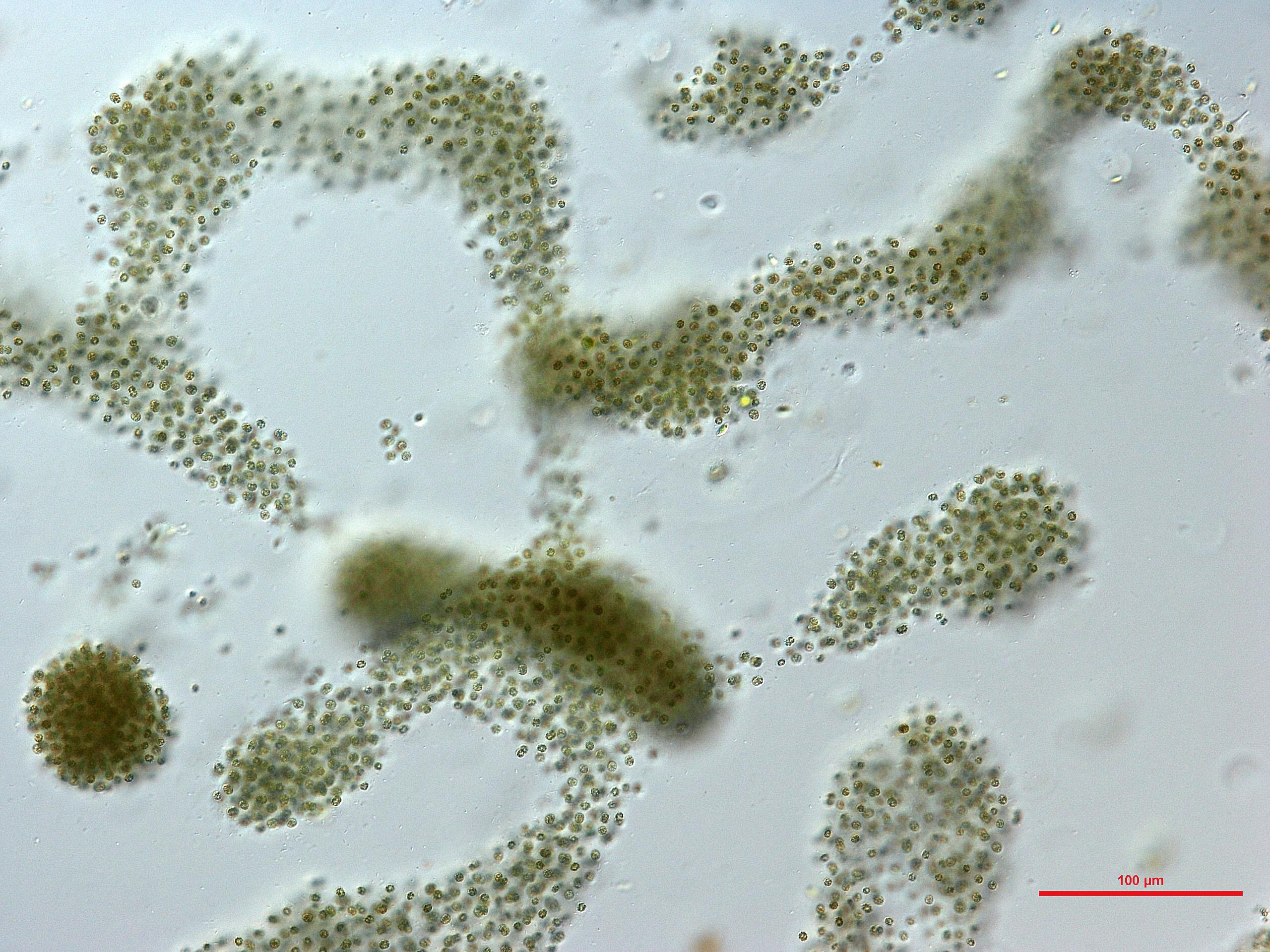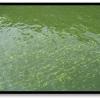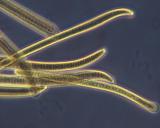Cyanobacteria/Cyanotoxins
What are cyanobacteria?
Blue-green algae, more correctly known as cyanobacteria, are frequently found in freshwater systems. They can also be found in estuarine and marine waters in the U.S. Cyanobacteria are often confused with green algae, because both can produce dense mats that can impede activities like swimming and fishing, and may cause odor problems and oxygen depletion; however, unlike cyanobacteria, green algae are not generally thought to produce toxins. Freshwater cyanobacterial blooms that produce highly potent cyanotoxins are known as cyanobacterial HABs (cyanoHABs).
What are cyanotoxins?
Cyanotoxins are produced and contained within the cyanobacterial cells (intracellular). The release of these toxins in an algal bloom into the surrounding water occurs mostly during cell death and lysis (i.e., cell rupture) as opposed to continuous excretion from the cyanobacterial cells. However, some cyanobacteria species are capable to release toxins (extracellular) into the water without cell rupture or death.

What species of cyanobacteria produces toxins?
Cyanotoxins can be produced by a wide variety of planktonic cyanobacteria. Some of the most commonly occurring genera are Microcystis, Anabaena, and Planktothrix (Oscillatoria).
Microcystis is the most common bloom-forming genus, and is almost always toxic. Microcystis blooms resemble a greenish, thick, paint-like (sometimes granular) material that accumulates along shores. Scums that dry on the shores of lakes may contain high concentrations of microcystin for several months, allowing toxins to dissolve in the water even when the cells are no longer alive or after a recently collapsed bloom.
Species of the filamentous genus Anabaena form slimy summer blooms on the surface of eutrophic lakes and reservoirs. Anabaena blooms may develop quickly and also resemble green paint. In less eutrophic waters, some species also form colonies, which are seen as large dark dots in water samples and on filters after filtration.
Planktothrix agardhii (previously named Oscillatoria agardhii) forms long, slender, straight filaments that usually remain separate but form dense surface scums. Its presence may be revealed by a strong earthy odor and the filaments are easily detected visually in a water sample.
What are the most commonly found cyanotoxins in the U.S.?
Based on the surveys that have been carried out to date in U.S. waters, the most commonly identified cyanotoxins are microcystins, cylindrospermopsin, anatoxins and saxitoxins.
Microcystins
Microcystins are produced by Anabaena, Fischerella, Gloeotrichia, Nodularia, Nostoc, Oscillatoria, members of Microcystis, and Planktothrix. Microcystins are the most widespread cyanobacterial toxins and can bioaccumulate in common aquatic vertebrates and invertebrates such as fish, mussels, and zooplankton. Microcystins primarily affect the liver (hepatotoxin), but can also affect the kidney, and reproductive system. The International Agency for Research in Cancer has determined that microcystin-LR is possibly carcinogenic to humans (Group 2B), based on data suggesting microcystin may be a tumor promoter. EPA determined that there is inadequate information to assess carcinogenic potential of microcystins in humans due to the limitations in the few available human studies (i.e., potential co-exposure to other contaminants) and lack of long-term animal studies evaluating cancer following oral exposure.
Cylindrospermopsin
Cylindrospermopsin is usually produced by Cylindrospermopsis raciborskii (C. raciborskii), Aphanizomenon flos-aquae, Aphanizomenon gracile, Aphanizomenon ovalisporum, Umezakia natans, Anabaena bergii, Anabaena lapponica, Anabaena planctonica, Lyngbya wollei, Rhaphidiopsis curvata, and Rhaphidiopsis mediterranea. The primary toxic effects of this toxin is damage to the liver and kidney. The evidence of carcinogenicity in humans and experimental animals is inadequate to assess the carcinogenic potential of cylindrospermopsin.
Anatoxins
Anatoxins bind to neuronal nicotinic acetylcholine receptors affecting the central nervous system (neurotoxins). There are multiple variants, including anatoxin-a, homoanatoxin-a, and anatoxin-a(s). These toxins are mainly associated with the cyanobacterial genera Chrysosporum (Aphanizomenon) ovalisporum, Cuspidothrix, Cylindrospermopsis, Cylindrospermum, Dolichospermum, Microcystis, Oscillatoria, Planktothrix, Phormidium, Anabaena flos-aquae, A. lemmermannii Raphidiopsis mediterranea (strain of Cylindrospermopsis raciborskii), Tychonema and Woronichinia. There is no information available on the carcinogenicity of anatoxin-a in humans or animals or on potential carcinogenic precursor effects.
Saxitoxins
Saxitoxins are representative of a large toxin family referred to as the Paralytic Shellfish Poisoning (PSP) toxins. When toxigenic marine dinoflagellates are consumed by shellfish, toxins concentrate and are delivered to consumers of the shellfish. These toxins have been reported also in freshwater cyanobacteria including Aphanizomenon flos–aquae, Anabaena circinalis, Lyngbya wollei, Planktothrix spp. and a Brazilian isolate of C. raciborskii.
More Information
Shedding Light on Cyanobacteria Webinar
US EPA IRIS Toxicological Reviews for Microcystins, Anatoxin-a, and Cylindrospermopsin
US EPA Health Effects Support Document for the Cyanobacterial Toxin Anatoxin-a
US EPA Health Effects Support Document for the Cyanobacterial Microcystins Toxins
US EPA Health Effects Support Document for the Cyanobacterial Toxin Cylindrospermopsin
WHO IARC Monographs on the Evaluation of Carcinogenic Risks to Humans; Ingested Nitrate and Nitrite, and Cyanobacterial Peptide Toxins, VOLUME 94Exit
For comments, feedback or additional information, please contact Lesley D'Anglada (Danglada.Lesley@epa.gov), Project Manager, at 202-566-1125.


